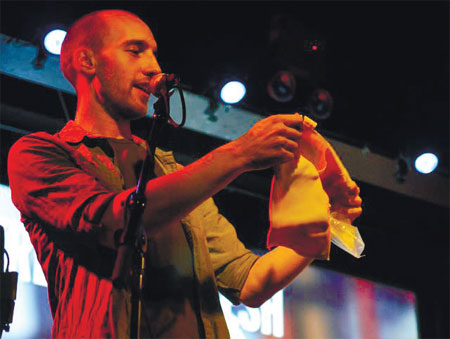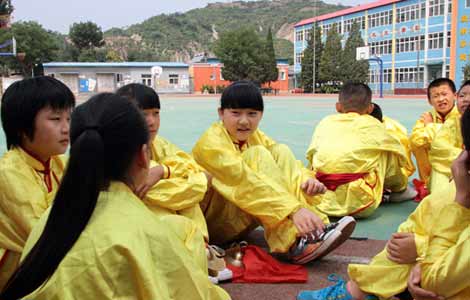NY food-lecture focuses on Chinese takeout
Updated: 2013-08-30 11:39
By Caroline Berg in New York (China Daily)
|
||||||||
|
Jonathan Soma presents a large tofu skin during a previous Masters of Social Gastronomy lecture in Brooklyn, New York. Provided to China Daily |
General Tso, the fortune cookie and chop suey are just a few of the elements that make up American Chinese takeout food.
More than 70 people gathered Wednesday night in a small community education center in New York to learn about the stories behind this culinary stronghold.
Sarah Lohman, who writes the Four Pounds Flour blog dedicated to uncovering flavors of the past and using them to inspire contemporary cooking, and Jonathan Soma, who co-founded the community-driven Brooklyn Brainery education center, led the lecture as part of their Masters of Social Gastronomy (MSG) series.
Each month, the pair takes on a new food topic and breaks down the history, science and stories behind it. While Lohman specializes on the history, Soma focuses on the science.
"We really try to find topics that people interact with all the time that maybe they don't ever think about or ever realize there's a lot more to it than you think," Soma told China Daily.
MSG began its $5 standing-room lecture series in January 2012 at the Public Assembly's multi-room arts and music venue, built in the shell of a historic mayonnaise factory, in Williamsburg, Brooklyn. MSG plans to move into The Brooklyn Kitchen permanently because the Public Assembly has closed for renovations.
For this lecture, which took place at the Brooklyn Brainery, Lohman delved into the history of Chinese takeout from dim sum to tea houses to the Jewish connection to Chinese food, while Soma discussed the journey General Tso's chicken made from Taiwan to the US and the fortune cookie's origin, among other stories.
"Fortune cookies are not Chinese," Soma said. "Nor are they American."
The famous takeout-digestive originated in Japan, where a family living outside of Kyoto hand-made fortune cookies flavored with sesame and miso. Japanese immigrants later brought the cookie to the US, where a Korean immigrant in San Francisco created a machine to mechanize and mass-produce the cookies. When World War II sent Japanese into US internment camps, the Chinese took over the industry.
"So, the cookie was invented by the Japanese, mechanized by the Koreans, popularized by the Chinese and consumed by Americans," Soma said. "[The fortune cookie] has a very multicultural flavor going for it."
Soma said when the Chinese started immigrating to the US, they asked themselves, "What sells well? What do Americans want to eat"?
"The reason why Chinese takeout is so good at what it does is because it's adaptable," Soma said. "It is unrecognizable as actual Chinese food, but it is custom-made for what Americans want to eat."
Chinese takeout is known for being cheap, fast and consistent.
"It's like you're going to McDonald's in any city in the world, but instead of [Chinese takeout] being a chain restaurant, it's a series of owner-operated places," Soma said. "Perhaps it varies in quality, but you always know what you're going to get."
For the series' anniversary earlier this year, Lohman and Soma led a class on MSG - the infamous sodium-based flavor enhancer traditionally popular in Chinese takeout.
"MSG is just fine. It tastes good and makes everything better," Soma said. "It's not a creepy, unnatural thing. If you cook seaweed in water, you're basically making an MSG broth."
Soma said the MSG safety debate began when someone wrote to the New England Journal of Medicine and proposed that the MSG in his Chinese food gave him headaches. Ever since, MSG has widely become demonized and many restaurants have taken MSG out of their kitchens. However, health issues caused by MSG have yet to be scientifically proven, according to Soma.
The next MSG lecture will be on Sept 24 and all about American BBQ. Past topics have included cocktails, F.T. Marinetti's The Futurist Cookbook (1932), sugar and artificial sweeteners, sandwiches, and culinary experimentation with illicit substances.
Soma said he and Lohman may conduct a lecture on the growing popularity of regional Chinese food, particularly seen in larger and more culturally diverse US cities like New York and San Francisco.
"Most people's introductions to Chinese food [in the US] is Chinese takeout," Soma said. "But once you start to dig a little deeper, you start to find out there are tons of regions in China all with their own special ways of preparing food, and 'Szechuan' is not just sweet food that happens to have some chili peppers on top of it."
carolineberg@chinadailyusa.com
(China Daily USA 08/30/2013 page10)
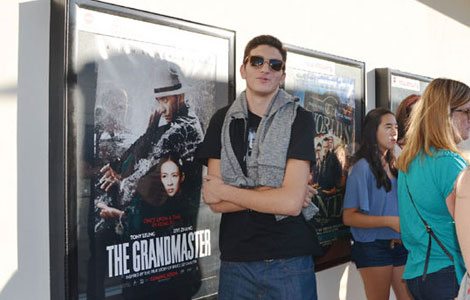
 Chinese Films in the US: Not a full house
Chinese Films in the US: Not a full house
 Jeremy Lin's campaign of animal protection
Jeremy Lin's campaign of animal protection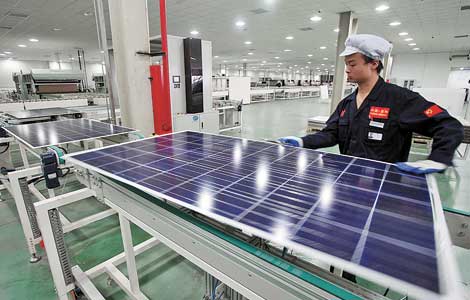
 Solar panel maker hits milestone
Solar panel maker hits milestone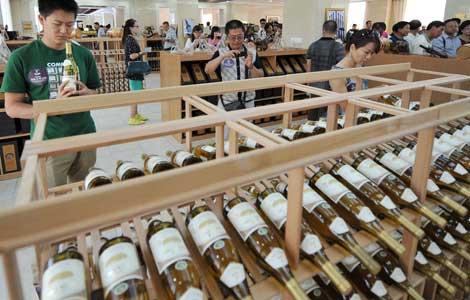
 Vineyards pour billions into chateaus
Vineyards pour billions into chateaus
 Foreigners given opportunities to shine
Foreigners given opportunities to shine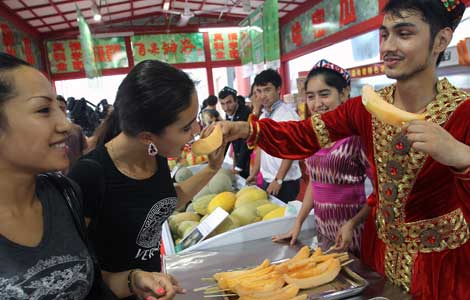
 Fair brings Hami melons to Beijing
Fair brings Hami melons to Beijing
 Court sentences 56 for telecom scam
Court sentences 56 for telecom scam
 US vows action in Syria even without UN backing
US vows action in Syria even without UN backing
Most Viewed
Editor's Picks

|

|

|

|

|

|
Today's Top News
Chinese shifting attention to US stock markets
Washington State governor plans Chinese mission
US readies possible solo action against Syria
Fed's taper is a key issue for G20
Visa issues resolved in new policy
Xiaomi hires Google exec
Trending news across China
Solar panel maker hits milestone
US Weekly

|

|
